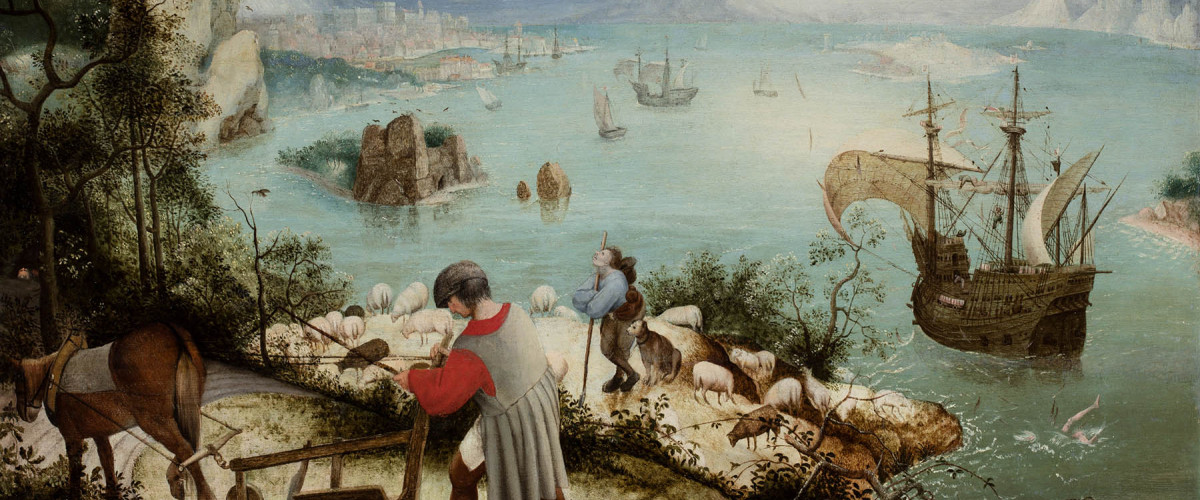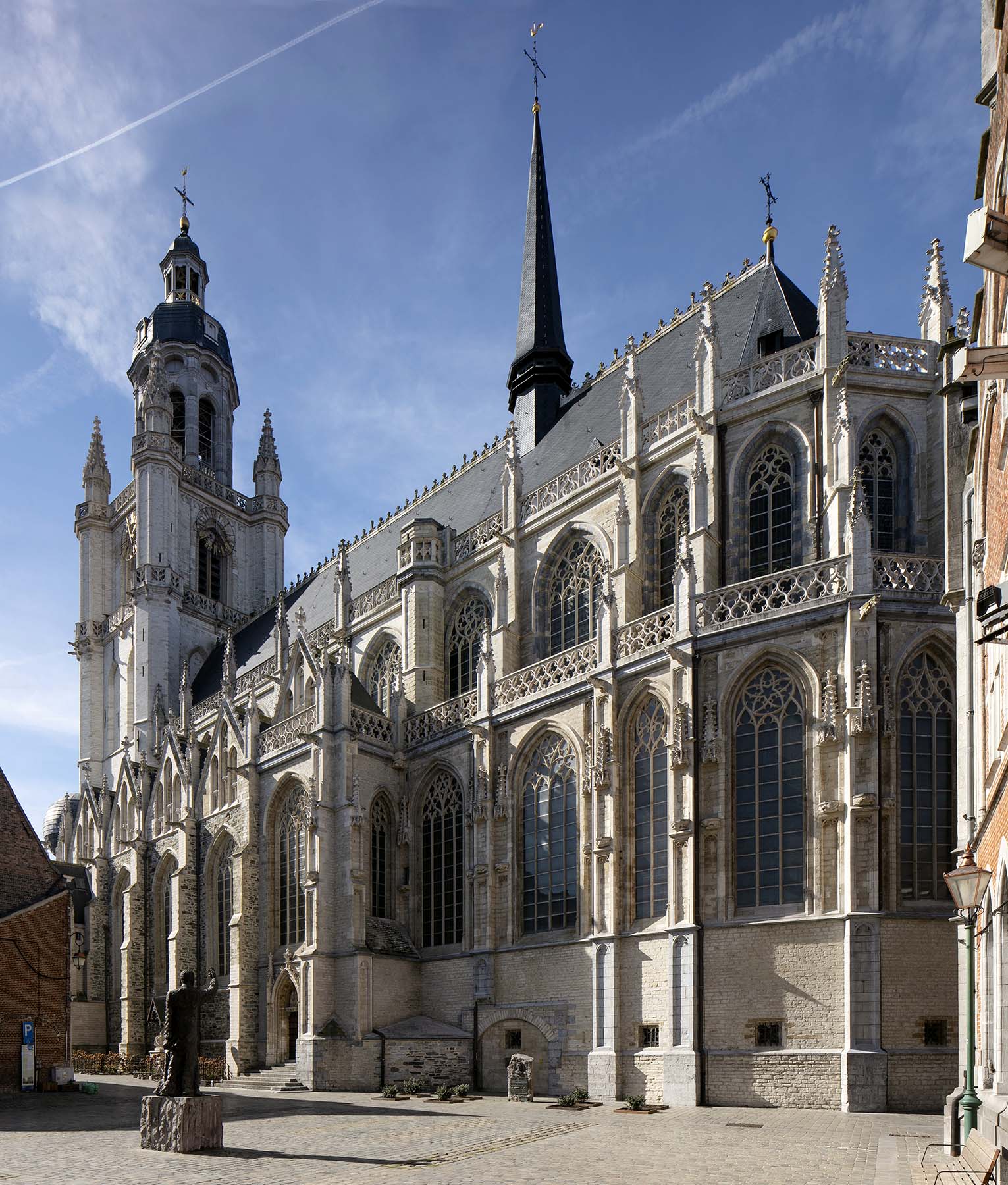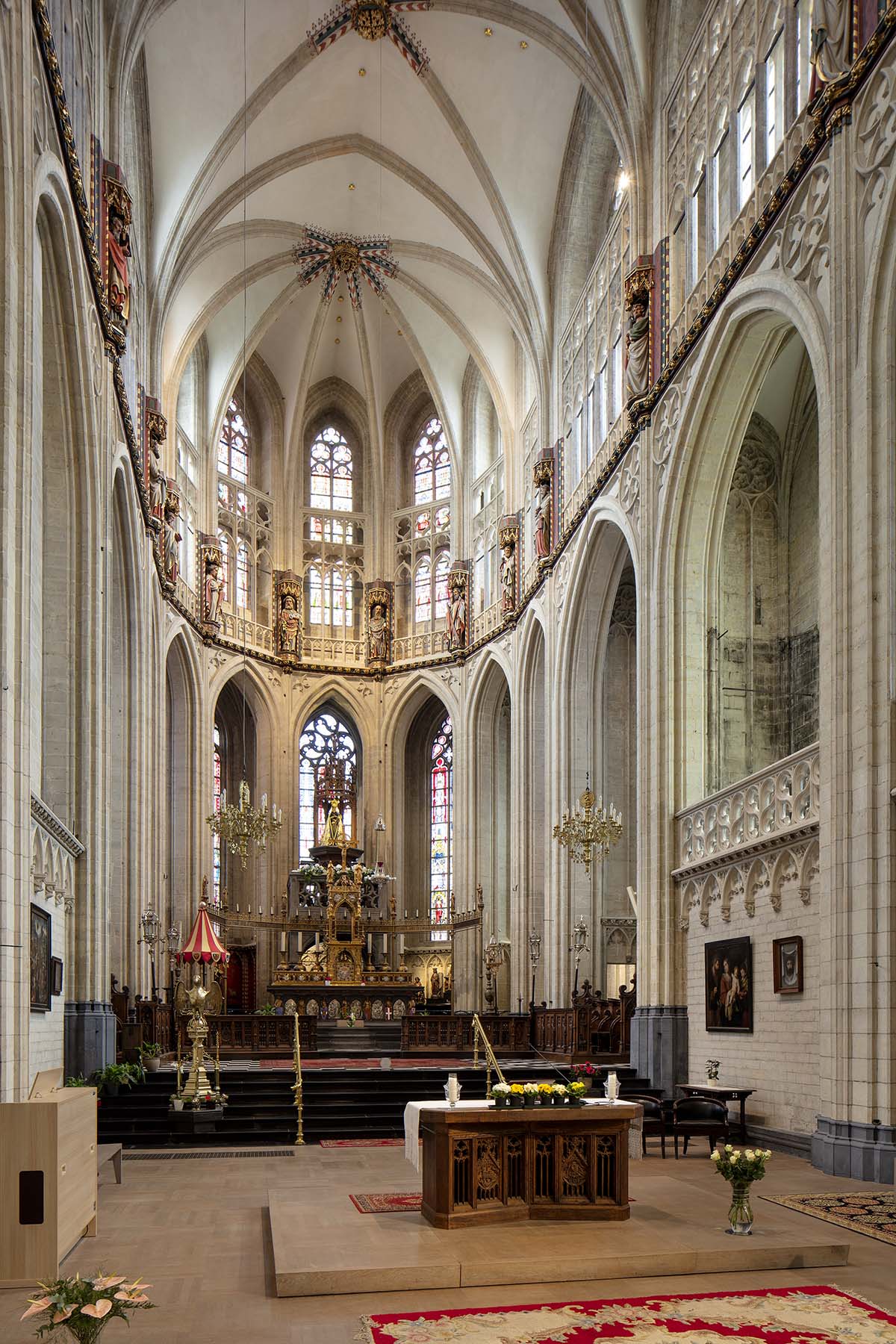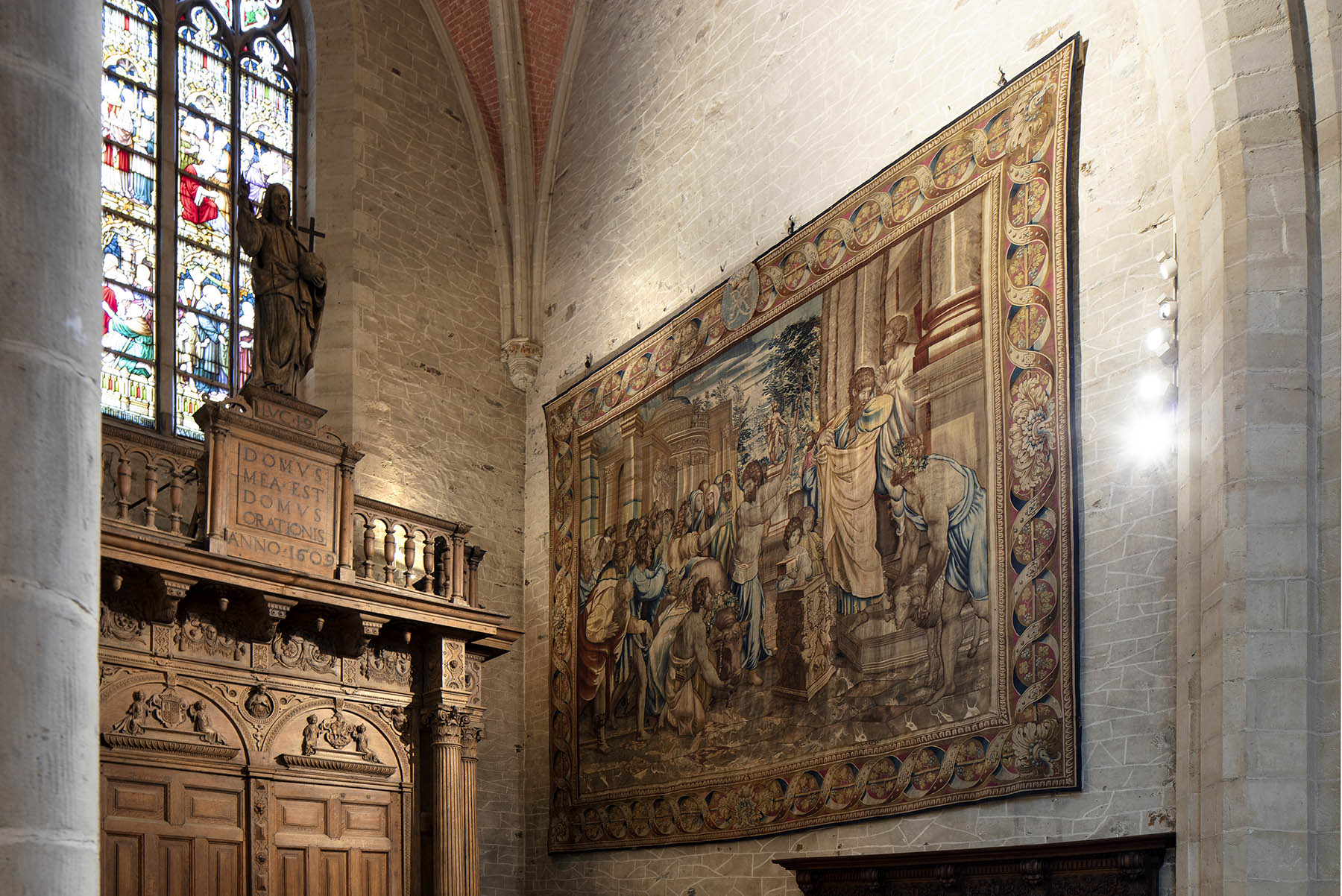One does not visit the Van Buuren Museum & Gardens in Uccle, one comes home in them. This is the home of a couple with great love for the arts, who designed their living spaces with ample care.
Van Buuren Museum
The house does not overwhelm the visitor. It was built with love and care, and with attention for the brick structure and finish. The woodwork instantly recalls Dutch examples. So it is clear: the Amsterdam School has left its mark here. The house was designed by patron David van Buuren himself and by his nephew Johan Franco while architects Léon Govaerts and Alexis van Vaerenbergh turned the plans into reality. There is no gaudiness, but rather an atmosphere of demure luxury. The hall exudes warmth thanks to the Brazilian rosewood and Jaap Gidding’s stained glass window, a geometric composition in orange and yellow tones. The chandelier by Jan Eisenloeffel is a striking feature which the owners bought at an exhibition of decorative arts in Paris in 1925. To let the chandelier truly shine, they had the stairwell enlarged. This is only one example of how architecture played second fiddle to the arts. The stairwell was designed for George Minne’s Kneeling Man. The garden, too, is definitely worth a visit. While David van Buuren mainly concerned himself with the house, Alice applied herself to designing the gardens.
The Fall of Icarus
Pride comes before a fall. This is exactly what was depicted in this painting, after a story by Roman author Ovid. In the story, a young Icarus flies with his father Daedalus out of their prison on the Greek island of Crete with wings made out of feathers and wax. Despite his father’s warnings, though, Icarus flew too close to the sun, so his wings started to melt and he ultimately plunged into the waves of the Aegean Sea. In the bottom right corner of the painting, we can see Icarus’s legs sticking out from the water. The painter evidently emphasised the ploughing farmer who is not paying any attention to the drama in the foreground. This famous work was long attributed to Pieter Bruegel the Elder, but research into the wood of the panel showed the painting is, in fact, a really excellent copy. The original work hangs in the Royal Museums of Fine Arts of Belgium in Brussels.
Kneeling Man - Georges Minne
Georges Minne belonged to the first Latemse School, which Gustave van de Woestyne belonged to as well. These artists were called the 'mystics', because in their quest for their own imagery, they showed a marked preference for mysticism and symbolism. The demure image of the Kneeling Man is one of Minne’s most famous works. The naked boy is kneeling and looking at the floor, seemingly trying to protect himself from the outside world with his arms. He looks insecure. Only a true master is able to convey such emotions in a realistic way.
Guilt andirons - Dolf Ledel
The andirons Esprit du feu (Spirit of the Fire) were made by Dolf Ledel in 1928. Around this period, his style was evolving from monumental realism to more stylised purity. We can discern Egyptian and Greek influences in his figures. These guilt andirons are a great example of the non-functionalist fashion within the Art Deco. They were never used, as they only had a decorative function, like the chimney, which had been designed only to suit the dimensions of a painting by Permeke.
Practical information
Disabled access
- Difficult to access for the disabled.



